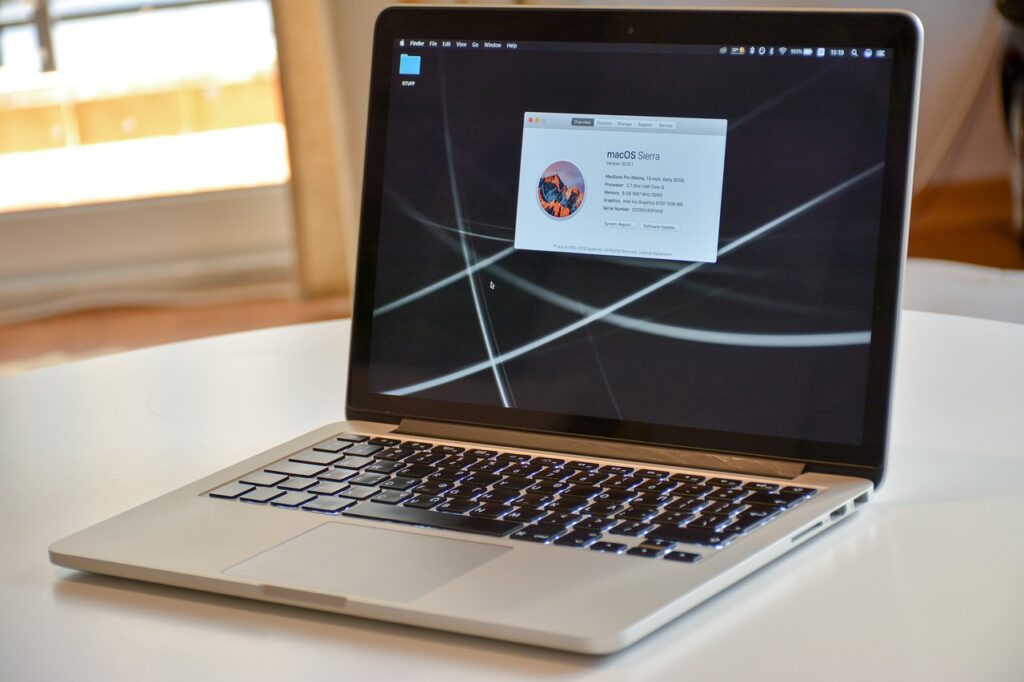In the realm of digital marketing, where competition for consumers’ attention is fierce, effective lead engagement is the cornerstone of success. One of the most potent tools in the digital marketer’s arsenal is web push notifications. These unobtrusive, real-time messages can be powerful catalysts for engagement, but their effectiveness hinges on how well they are optimized.
This in-depth guide will navigate you through the landscape of web push notifications, shedding light on strategies, best practices, and real-world examples that will help you harness their full potential. From understanding the basics to implementing advanced techniques, you’ll learn how to not only capture your leads’ attention but also keep them engaged and motivated.
Understanding Web Push Notifications
Before diving into optimization strategies, it’s crucial to grasp the fundamentals of web push notifications:
What Are Web Push Notifications?
- Web push notifications are short, clickable messages delivered by websites to users’ desktop or mobile browsers. They provide real-time updates and encourage users to take specific actions.
Why Are They Effective?
- Web push notifications offer immediacy and visibility, appearing even when a user’s browser is closed. This direct channel to users’ devices makes them a potent engagement tool.
The Importance of Lead Engagement:
- Effective lead engagement is essential for conversion and customer retention. Engaged leads are more likely to convert into paying customers and advocate for your brand.
Optimization for Better Results:
- To unlock the true potential of web push notifications, optimization is key. It involves crafting messages that resonate with your audience and prompt them to take desired actions.
Accessibility and Simplicity:
- Throughout this guide, we’ll keep things accessible and straightforward, ensuring that you can implement these strategies regardless of your level of technical expertise.
Mastering the Art of Crafting Engaging Web Push Notifications
Creating web push notifications that not only grab your leads’ attention but also compel them to take action requires finesse. In this section, we’ll delve deeper into the intricacies of crafting notifications that leave a lasting impression.
Attention-Grabbing Headlines: Your Notification’s First Impression
The Essence of Headlines: Consider your notification’s headline as the virtual handshake with your leads. It should be compelling, concise, and most importantly, relevant.
Personalization that Resonates: Incorporating lead-specific information, such as their name or recent interactions, into the headline can significantly boost relevance. It’s like calling someone by their name in a conversation—it instantly creates a connection.
The Art of Clarity and Conciseness
The Power of Brevity: In the world of web push notifications, less is often more. Keep your message clear, concise, and free from jargon. Remember that your leads have limited attention spans.
Action-Oriented Approach: Every notification should prompt a specific action. Whether it’s clicking through to your website, signing up for a newsletter, or taking advantage of a limited-time offer, your message should leave no room for ambiguity.
The Visual Appeal
A Picture’s Worth a Thousand Words: Incorporating images or icons can enhance the visual appeal of your notifications and convey messages more effectively. Visual elements should complement and reinforce your message.
Responsive Design: In a multi-device world, ensure that your notifications look appealing and are easily readable on various screen sizes. A notification that appears distorted or poorly formatted may deter leads from engaging.
Timing, Relevance, and Avoiding Overload
Timing is Everything: Send notifications at times when they are most likely to be relevant to your leads. Consider their time zones and past interaction patterns to determine optimal timing.
Balancing Act: Avoid overwhelming your leads with notifications. Too frequent or irrelevant messages can lead to annoyance and opt-outs. Strive for a balance that respects your leads’ attention.
The Power of A/B Testing
A Continual Refinement Process: A/B testing is your ally in crafting the perfect notification. Experiment with different headlines, messages, images, and timing to discover what resonates best with your specific audience.
Data-Driven Decisions: Base your optimization strategies on solid data and insights gathered through A/B tests. What works for one audience may not work for another, and your lead engagement tactics should reflect this.
Advanced Techniques for Web Push Notification Optimization
Building on the foundation of crafting compelling notifications, let’s delve deeper into advanced techniques that can elevate your web push notification game to the next level:
Segmentation and Personalization
The Power of Segmentation: Instead of sending one-size-fits-all notifications, segment your leads based on their preferences, behavior, or demographics. Tailor messages to each segment’s unique interests and needs.
Dynamic Personalization: Implement dynamic content that adapts based on the recipient’s data. Personalized notifications tend to have higher engagement rates.
Behavior-Triggered Notifications
Triggered by Actions: Set up behavior-triggered notifications that are automatically sent when a lead takes a specific action on your website. For example, if a lead abandons their shopping cart, a reminder notification can prompt them to complete the purchase.
Relevance in Real-Time: Behavior-triggered notifications are highly relevant because they respond to a lead’s immediate actions, increasing the chances of engagement.
Localization
Speak Their Language: If you have an international audience, consider sending notifications in their preferred language. Localization extends beyond translation; it includes cultural nuances and preferences.
Geo-Fencing: Use geo-fencing to send notifications when leads enter specific geographic areas. This is particularly effective for businesses with physical locations, such as retail stores or restaurants.
Interactive Notifications
Engagement through Interaction: Make your notifications interactive. Include buttons that allow leads to take actions directly from the notification itself, such as confirming attendance to an event or subscribing to updates.
Feedback and Surveys: Use web push notifications to gather feedback from leads through surveys or polls. This not only engages them but also provides valuable insights.
Timing Optimization
Time-Based Engagement: Analyze your leads’ historical engagement patterns to determine the best times to send notifications. Experiment with sending notifications during off-peak hours to stand out.
Avoiding Sensitive Times: Be mindful of sending notifications during late-night or early-morning hours, as this can lead to irritation.
Expiry and Urgency
Create Urgency: Add an element of urgency to your notifications by setting expiration times. For example, a flash sale notification that expires in 24 hours encourages immediate action.
Countdowns: Use countdown timers to visually convey urgency. For instance, a notification for a limited-time offer can include a real-time countdown.
Analytics and Optimization Tools
Continuous Monitoring: Regularly analyze the performance of your notifications using analytics tools. Track metrics like open rates, click-through rates, and conversion rates.
Iterative Optimization: Use the insights gained from analytics to iteratively optimize your notification strategies. Experiment with different techniques and adapt based on results.
Compliance and Transparency
Respect Privacy: Ensure that your notification practices comply with privacy regulations, such as GDPR or CCPA. Obtain explicit consent from leads before sending notifications.
Transparency: Clearly communicate what leads can expect when they subscribe to your notifications. Honesty and transparency build trust.

Related: Check out our free SEO suite

Measuring the Effectiveness of Web Push Notifications
Understanding how well your web push notifications are performing is essential for continual improvement. Let’s explore the metrics and tools to measure their effectiveness:
Key Metrics
Open Rate: This metric indicates the percentage of recipients who opened your notification. A high open rate suggests your message’s appeal.
Click-Through Rate (CTR): CTR measures the percentage of recipients who clicked on a link or button within your notification, taking the desired action.
Conversion Rate: The conversion rate represents the percentage of leads who completed the desired action after clicking on your notification. It could be making a purchase, signing up, or downloading content.
Opt-Out Rate: Also known as the unsubscribe rate, this metric reveals the percentage of leads who chose to stop receiving your notifications.
A/B Testing
Testing Variations: A/B testing involves creating two variations of a notification—one is the control, and the other is the variant. Test different elements like headlines, images, and messages to identify what resonates best.
Iterative Improvement: Use the results of A/B tests to refine your notifications continually. Incremental improvements can lead to significant gains in engagement.
Analytics Tools
Google Analytics: If your website uses Google Analytics, you can track how web push notifications contribute to your site’s overall performance.
Push Notification Platforms: Most web push notification platforms offer built-in analytics. Utilize these tools to gain insights into notification performance.
Heatmaps
Click Heatmaps: Heatmaps display where users clicked within your notification. Understanding click patterns can help you optimize button placement and content.
Scroll Heatmaps: For longer notifications, scroll heatmaps show how far users read. Use this data to determine the optimal length of your notifications.
Customer Feedback
Surveys and Feedback Forms: Actively seek feedback from your leads regarding their notification preferences. What types of notifications do they find valuable, and what can be improved?
Customer Support Data: Analyze customer support data for insights into how notifications are received. Are there patterns of inquiries or complaints related to notifications?
Conclusion: Elevating Lead Engagement through Web Push Notifications
In the dynamic world of digital marketing, web push notifications stand as a potent tool for lead engagement. Crafting compelling messages, implementing advanced techniques, and measuring effectiveness are essential steps toward optimization. Remember that successful web push notification strategies are born from a blend of creativity and data-driven decision-making. Continually adapt, test, and refine your approach to meet the ever-evolving expectations of your leads.
As you embark on your journey to harness the full potential of web push notifications, keep in mind that lead engagement is not just about capturing attention—it’s about building lasting relationships. Treat each interaction as an opportunity to connect, provide value, and nurture leads toward conversion.
READ NEXT:
- How to Beat Big Brands in SEO as a Small Travel Agency
- Currency and Language Switchers: SEO Best Practices
- A Deep Dive into Webinar Scripting and Outline Creation
- Advanced Google Analytics Tracking for Financial Websites
- 21 Best Ad Campaign Management Tools: Our Take






















Comments are closed.